Can You Use Dslr Lens On Mirrorless Camera
Mirrorless vs DSLR cameras: the ten primal differences you demand to know
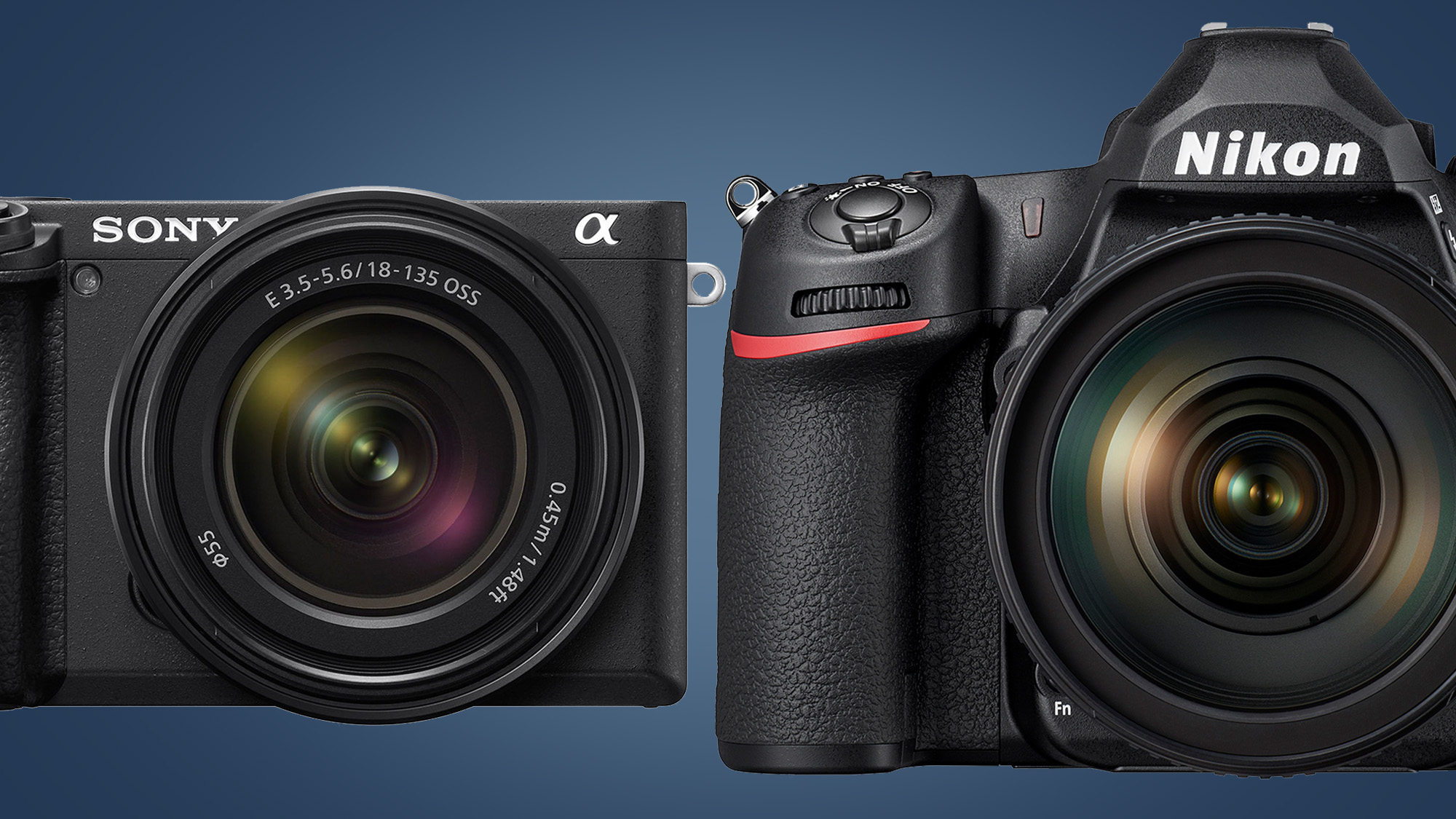
Mirrorless vs DSLR: introduction
How do you make the right choice in the not bad mirrorless vs DSLR camera debate? Things have certainly inverse in the decade since mirrorless cameras beginning arrived on the market place, but our in-depth guide is here to give yous all the answers.
These days, mirrorless cameras are now the default style for the world'south biggest camera brands – even the doyens of DSLRs, like Catechism and Nikon. Back in the early days of the format, the determination was pretty unproblematic – if you lot were a pro, you tended to pick up a DSLR. Hobbyists and amateurs, who were more bothered by weight and portability, would instead lean towards their mirrorless counterparts.
Simply now the roles are somewhat reversed. The latest and greatest engineering science is at present constitute in mirrorless cameras. And if you're an entry-level user, you might be more probable to get for a cheaper DSLR, given they remain the most affordable way to get a camera with a congenital-in viewfinder.
For those in betwixt beginners and pros, in that location'south now more choice than ever before, which tin make choosing the right photographic camera tech for you somewhat tricky. Simply fear non, that'south where we come up in.
Let's start with the nuts and expect at the primal differences betwixt the two types of cameras. The key is in the names. DSLR stands for Digital Single Lens Reflex, which works past the calorie-free striking a mirror angled at 45 degrees. That calorie-free goes straight up into an optical viewfinder which allows yous to see precisely what the lens is looking at. This is a true optical path, with no digital processing in the middle.
When you're ready to take a photograph, that mirror moves out of the way – to reveal the image sensor – and if you've used one in the past, you'll be familiar with the satisfying (only fairly loud) racket it makes as it does and then.
By contrast, mirrorless cameras – you've guessed it – don't take a mirror. With these cameras, the lite passes through the lens and straight onto the sensor to be processed. It'south then displayed either on the monitor on the dorsum of the camera, or in the electronic viewfinder (EVF), which is in essence a very small monitor. This time, when you take a picture, the camera is simply recording what is on the sensor at that moment in time.
DSLRs use the same technology as their film counterparts, which have been effectually for decades. They're very familiar for everyone who has been serious about photography in contempo years. Legacy companies such as Canon, Nikon and Pentax accept been making them for all those years so have a lot of experience to depict from.
These days, relatively few new DSLRs are introduced to the market, but in that location'due south still enough y'all can purchase. They tend to accept slap-up handling, offer fantastic image quality and one advantage that doesn't look set to get away for a while notwithstanding – extremely impressive bombardment life.
By taking away the mirror, mirrorless cameras requite you several advantages (and very few disadvantages). The key one is that, since they don't demand that large clunky mirror setup, they tin can be smaller and lighter than their equivalent DSLR counterparts.
Some of the tasks of the camera, like autofocusing, can have identify on the sensor itself, leading to super-quick focusing speeds. Speaking of speed – with no mirror to motility out of the way, frame rates aren't limited so much by physicality. Mirrorless cameras routinely offer at least 10fps, with some loftier-end models delivering 20fps or 30fps at full resolution, with continuous autofocus betwixt each shot.
In the starting time, mirrorless cameras tended to use smaller sensors than DSLRs. But at present, the most popular sensor size in these models is full-frame, with Sony, Nikon, Canon and Panasonic all producing this type of camera. APS-C is besides a mutual sensor size, for both mirrorless and DSLR. All of this means that at that place'southward no generally discernible difference betwixt outright epitome quality in DSLRs and mirrorless cameras, no matter which yous cull to go with.
The electronic viewfinders found on early mirrorless cameras weren't specially great, being low in resolution and tiresome. Merely over the years the technology has advanced so much that many photographers now prefer the super high-resolution viewfinders on the current ingather of high-end mirrorless cameras. They show a truer reflection of what your final image will look similar, as well as allowing you lot to see a preview of your prototype later on you've shot it.
All of this makes information technology sound like mirrorless is the obvious winner – and while the fact that barely any new DSLRs have been announced in the by 12 months might seem to back that up, there are still some advantages of the older technology.
We'll discuss the main differences in the coming pages to help you lot come to a firm conclusion.
By taking away the mirror, mirrorless cameras requite yous several advantages (and very few disadvantages).
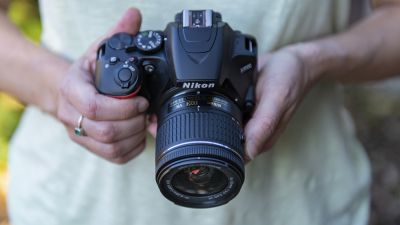
1. Size and weight
- DSLR: Traditionally, these were the bigger of the two. This isn't necessarily a negative, as it can help when shooting with large telephoto lenses (and big hands). These days though, mirrorless cameras tin be just as large equally DSLRs.
- Mirrorless: On the whole, mirrorless cameras are generally smaller and lighter than the average DSLR, making them ideal for travelling light and keeping the overall weight downward. You'll find some pro mirrorless cameras break this 'dominion' though.
When mirrorless cameras first entered the market, one of their big selling points was their pocket-sized size. The kickoff cameras of this kind to get really popular were Micro Four Thirds models, which traded on the thought that the overall system was much smaller and lighter than their DSLR equivalents.
As larger sensor sizes started to get popular, information technology no longer became a simple statement of fact that mirrorless meant 'smaller'. When you utilize an APS-C or a total-frame sensor, yous might be able to get a small(ish) body, but the compatible lenses will likely be big and heavy. Some manufacturers have attempted to answer the trouble with retractable or 'ability-zoom' kit lenses, but as soon as you need to swap to a different type of lens, the trouble appears once again.
- Sensor sizes explained: what you demand to know
If size and weight is your main concern, the Panasonic K series and Olympus cameras have the reward. They use the Four Thirds sensor format inside their Micro Four Thirds models, which are smaller than APS-C and total-frame sensors. In that location's an argument that image quality tin can't match larger sensors – especially in some shooting scenarios such as low light – but the smaller sensor helps to deliver a much more than compact system all circular. And it's slap-up for those who need high levels of zoom in a small package.
Some college-stop mirrorless cameras are really very large, with some manufacturers responding to feedback from pros who say they'd prefer larger grips for improve ergonomics. That fifty-fifty includes cameras like the Olympus OM-D E-M1X, which has a small sensor and a large body that incorporates two grips.
Panasonic's introduction of its L Mount full-frame cameras, such equally the Panasonic Lumix S1, are also very large, and are fifty-fifty bigger than some existing DSLRs.
Conversely, entry-level DSLRs are shrinking to compete with the smaller footprint of similarly priced mirrorless cameras. Nikon's D3500 and Canon's EOS Rebel T7 / 2000D are charmingly small and light, making them less of a burden to carry around.
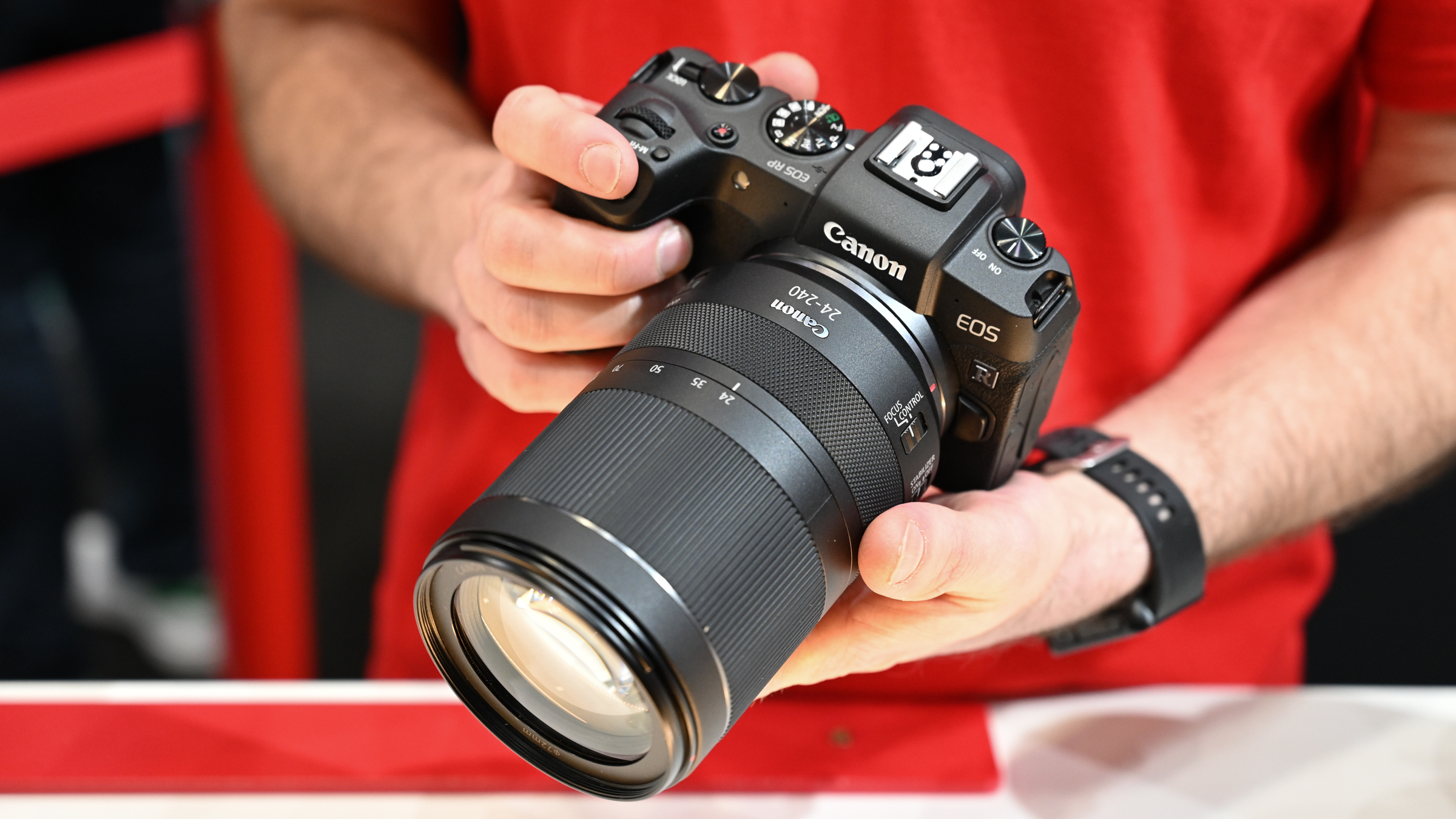
2. Lenses
- DSLR: There's a huge range of lenses available for DSLRs, as both Catechism and Nikon have an optic to suit every task. Pentax also has a lot of bases covered, while options from third-party manufacturers too make for a comprehensive ready of compatible options.
- Mirrorless: While there are slightly fewer options for mirrorless cameras, most bases are now covered, particular for older systems such every bit Sony, Fujifilm and Micro Iv Thirds. Newer systems such as Catechism's R and Thou mountain, Nikon's Z mountain, Fujifilm'due south GFX series have fewer, but the range is expanding all the time. If you lot need something niche, y'all can often use DSLR lenses with a mirrorless camera via an adapter.
Technically speaking, if you want the widest possible choice of lenses, a Catechism or Nikon DSLR volition be your all-time bet. Each of these options has a huge range of lenses at a diverseness of price points, with tertiary-party manufacturers such as Sigma and Tamron too providing options.
DSLRs have the age advantage, with the lens format having been around for decades. Just the options bachelor for mirrorless cameras have caught upward quickly, and at present there's a diverse range of lenses to adapt nigh every demand, with more new lenses being added as time goes on. It'south really merely those with very niche needs who are missing out by choosing mirrorless.
The longest established mirrorless system – although now falling in popularity – is Micro Four Thirds, used by Olympus and (some) Panasonic cameras. Every bit such, this organization offers the almost all-encompassing range at the moment.
Fujifilm'south X-series is also pretty comprehensive, having been around for a like length of fourth dimension. Its medium-format GFX series has fewer options, but is gaining ground equally the years go by. Both offering a expert ready of zoom and prime number lenses, and while there are still a few gaps here and there, they tend to exist niche optics that the boilerplate consumer won't be too bothered about being without.
Sony's APS-C and full-frame mirrorless cameras take been around for quite some fourth dimension now. They share the same mount, and so while there are lenses that are specifically designed for either APS-C or Total-Frame, being able to swap between the ii is beneficial for those upgrading. There are some high-end optics which are matched perfectly to models such every bit the Sony Alpha A7 III, including specialist eyes similar the Sony Fe 600mm f/4 GM OSS telephoto prime lens.
Frustratingly, Canon has two lines of mirrorless cameras, APS-C and full-frame, which don't use the same mount. Both are likewise different from the mounts used by its DSLRs, also. If you are an existing Canon DSLR owner, the good news is that you can apply mount adapters on its mirrorless systems, giving you the pick to merely replace lenses equally and when its necessary, rather than all in ane go.
Right now, there's a healthy range of lenses for EF-M and RF mounts, but there are withal some pregnant gaps to be filled, particularly with the RF mount beingness and then new. Merely with the recent introduction of the Canon EOS R5 and Canon EOS R6, we expect a lot more lenses to exist announced in the coming months and years.
Nikon, meanwhile, uses the same mountain across both its APS-C and total-frame mirrorless systems. The Z-mount is different from the F-mount used by Nikon DSLRs, but if you lot already have some lenses, you can use an adapter to bring those across. It'due south a pretty seamless transition and helps to fill in any gaps in the line-upwardly while nosotros're waiting for Nikon to expand its mirrorless lens range. At the time of the system's launch, at that place were only a handful of Z-mountain lenses, but there's a proficient caste of choice now.
Another adequately recent introduction is the L-mount alliance, which is a joint venture betwixt Panasonic, Sigma and Leica. These 3 companies are developing products that can be used in conjunction with each other, giving buyers the reward of triple the range – and triple the development ability. There's already a adept range of lenses available for Fifty Mountain, with more appearing regularly.
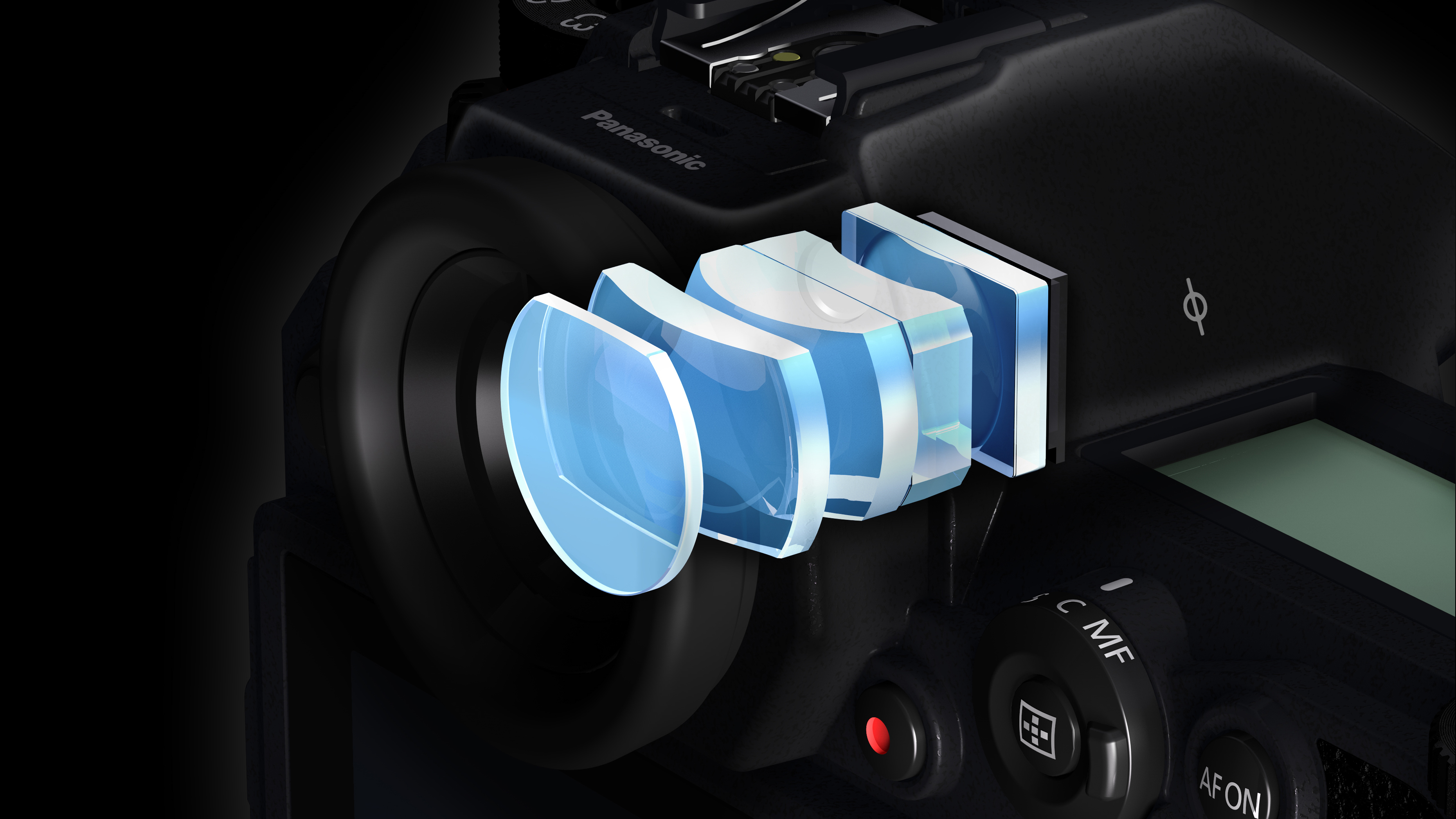
3. Viewfinders
- DSLR: Some photographers, especially sports shooters, yet adopt an 'optical' view for its clarity, natural look and lag-complimentary viewing. These are standard on DSLRs.
- Mirrorless: Early on electronic viewfinders were low in quality, but recently the tech has improved and so much that information technology's actually a preferable way of shooting for many. Yous'll become a existent-fourth dimension view of the scene you're shooting, along with vital information displayed hands.
All DSLRs, even the cheapest, come with an optical viewfinder, because it'due south an integral function of the DSLR pattern. Although it's relatively rare in current line-ups, some entry-level mirrorless cameras, on the other mitt, don't have viewfinders at all. This means your only pick is to compose photos via the rear LCD, which is a boon for portability, but doesn't always work and so well in bright sunlight.
Mirrorless cameras use electronic rather than optical viewfinders. That means they display the paradigm direct from the sensor readout and non via an optical mirror/pentaprism system.
Electronic viewfinders are advancing at a fast pace, and the latest rarely show any graininess that was an upshot in earlier generations, while the visible lag that was one time common has all only been eradicated.
The advantage of electronic viewfinders is that they can brandish a lot more information than an optical viewfinder, including live image histograms, for example. They tin can also simulate the digital paradigm the camera will capture, so you don't become whatsoever horrible surprises when yous review your epitome, equally it's exactly what you're seeing.
This simulation is not always perfect, however, and many photographers prefer to see the world with their own optics every bit they etch the prototype, then bank check the digital version on the LCD once it'due south been captured. Optical viewfinders are also easier to apply in low light.
This volition come down to personal preference; become one of the latest high-stop mirrorless cameras with a large magnification, large resolution electronic viewfinder, and you'll be hard pressed to notice fault with information technology. The Sony A7S Three is an example of a simply stunning electronic viewfinder, offering superb clarity. And this is increasingly condign standard on the latest mirrorless cameras.

4. Autofocus
- DSLR: Used to accept a clear autofocus reward, simply no longer. Some DSLR systems are improve for moving subjects, but information technology's non straightforward.
- Mirrorless: While entry-level models may struggle, many mirrorless cameras now have hybrid contrast- and phase-find AF systems, which fare much better. Several systems are equally reliable as those on DSLRs, if non more and so.
Professionals who wanted the very fastest autofocusing used to head direct for DSLRs. But these days, with fantastic advances made in mirrorless technology, it'southward very often the newer type of photographic camera that has the advantage – especially if you become for premium mirrorless options.
High-finish DSLRs haven't been updated in some time, but models such every bit the Nikon D850 and Canon EOS-1D X Marker III still offer sophisticated systems. They use fast and efficient 'phase-detection' autofocus modules which are mounted below the mirror in the photographic camera'due south bodies.
Still, DSLR systems are express by the fact that their autofocus only works while the mirror is down. This ways that fast frame rates are hard to accomplish, since this needs to exist moved out of the way each time. Yous could switch to using Alive View, merely that means the regular AF module is no longer in the light path and a slower dissimilarity-detect AF system is used.
Some slightly newer DSLR models, such as the Canon EOS Rebel SL3 / EOS 250D and Canon EOS 6D Mark Two take included Dual Pixel CMOS A, which uses phase-detection pixels built into the sensor. This gives faster autofocus in Live View, and while it helps to close the gap on mirrorless cameras, nosotros're now seeing such incredible systems from several manufacturers that mirrorless definitely at present has the edge.
Since in that location's no mirror, these types of cameras utilize sensor-based autofocus all the time. Many are dissimilarity-based AF, but they tend to be faster than the equivalent AF modes on DSLRs. More mirrorless models are now using advanced hybrid AF systems, which combine contrast-detect with phase-find AF from the sensor to deliver exceptional performance.
They impress not only with their speed, simply also accurateness when it comes to tracking a moving subject. Both the Canon EOS R5 and the Catechism EOS R6 are ii recent introductions that offering almost unerring accuracy when tracking a subject, while Sony models such as the Sony A7 III also put in an fantabulous performance, using "Real-Fourth dimension AF" tracking to closely follow your subject with just a unproblematic half-printing of the shutter push. Information technology's most too easy. Super loftier-end models such as the Sony A9 Two and the very recently announced Sony A1 are fantastic options for sports and action photographers who merely can't afford to miss a shot.
Another advantage that many mirrorless cameras offer is center- and face- detection which makes photographing people (and animals) even more than authentic. All of the major mirrorless brands offer Face/Centre detection, helping you lot to go sharp shots almost without fail – it's something you might need to actuate from the main menu rather than it being used by default, though.

5. Continuous shooting
- DSLR: The best DSLRs tin no longer match the speeds of the all-time mirrorless cameras
- Mirrorless: The mirrorless blueprint makes it easier to add high-speed shooting and even cheaper models take relatively fast burst speeds
You demand a fast continuous shooting fashion to capture activity shots, and mirrorless cameras are streaking ahead here. This is partly because the mirrorless system has fewer moving parts, but likewise considering many models are at present pushing ahead into 4K or even 8K video – this demands serious processing power, which helps with continuous shooting as well.
To put this in perspective, Canon's top professional DSLR, the Canon EOS-1D X Mark 3, can shoot at 16 frames per second when using the viewfinder, but mirrorless cameras like the Panasonic Lumix G9 and Sony Blastoff A9 II tin can both shoot at a staggering 20fps. The new Sony A1, meanwhile, has raised the bar over again with 30fps continuous shooting with autofocus, an impressive achievement.
You take to exist a little conscientious, though, when looking at the specs. Some mirrorless cameras volition boast even college frame rates than this (in some cases, up to 60fps), but will have to use an electronic shutter to achieve this and focus will exist fixed from the first shot. This isn't great if you lot're planning to track a moving subject, or shoot nether some types of artificial lite, where banding tin occur without the utilize of a mechanical shutter.
You lot've too got to be realistic about what kind of burst shooting speeds you are going to need; shooting at 60fps ways y'all'll fill up a memory menu pretty quickly, and yous'll have to spend a lot of fourth dimension trudging through a multitude of images to detect that 'one' shot. That said, with even entry-level mirrorless cameras offering faster burst shooting speeds than nigh DSLRs, mirrorless cameras certainly have the edge if this is your priority.

6. Video
- DSLR: One time massively popular with pros, but have long been overtaken by mirrorless rivals.
- Mirrorless: 4K video is now standard on all merely the cheapest mirrorless cameras, with some at present starting to offer 6K/8K.
DSLRs were well ahead of mirrorless cameras when information technology came to offering professional HD and Full HD video capture. Their vast range of lenses and other accessories fabricated them a hit with pro video makers – the Canon EOS 5D Mk Ii, in item, changed the game by shooting video from a full-sized sensor, for far less money than many pro cameras.
But the shift has certainly been towards mirrorless cameras favor in recent years, offer a wealth of video features that most DSLRs can't friction match.
4K capture is a more than mutual characteristic for starters on mirrorless cameras, while DSLRs have been tedious to offer this functionality. With relatively few new DSLRs appearing in recent months, there'due south non too many to choose from if you need this kind of video. For entry-level models that do offer it – such as the Canon EOS Insubordinate T8i / EOS 850D – a heavy crop is applied, which is pretty limiting in many situations.
There's also the efficient alive view autofocus and processing power offered past mirrorless cameras, while the growing range of adapters and accessories out there offer video shooters a more than consummate system.
The Sony A7S 3 is currently our pick for the title of best 4K camera. Information technology offers stunning video quality, and though it's less well-suited for stills than some other models, for those whose principal business organization is flick capture it's merely the all-time you can buy right now.
That said, we're likewise now starting to see fifty-fifty higher resolution options come to the market. 1 of the Canon EOS R5's headline features is its power to record 8K video, albeit with some limitations. We expect this to get the norm over the coming years equally the technology develops and becomes more commonplace.
Panasonic has carved out a niche for itself with the Panasonic Lumix GH5 and Panasonic Lumix GH5S, offer a hybrid stills/video photographic camera that's loved past enthusiast photographers and professional cinematographers.
Besides from Panasonic is its total-frame Panasonic Lumix S1H camera, one of its full-frame L-Mount Alliance models. We've been told that this has vastly outsold the more stills-oriented S1/S1R models due to its fantastic video credentials, giving you an idea of just how important video is to the visitor – and mirrorless camera fans.
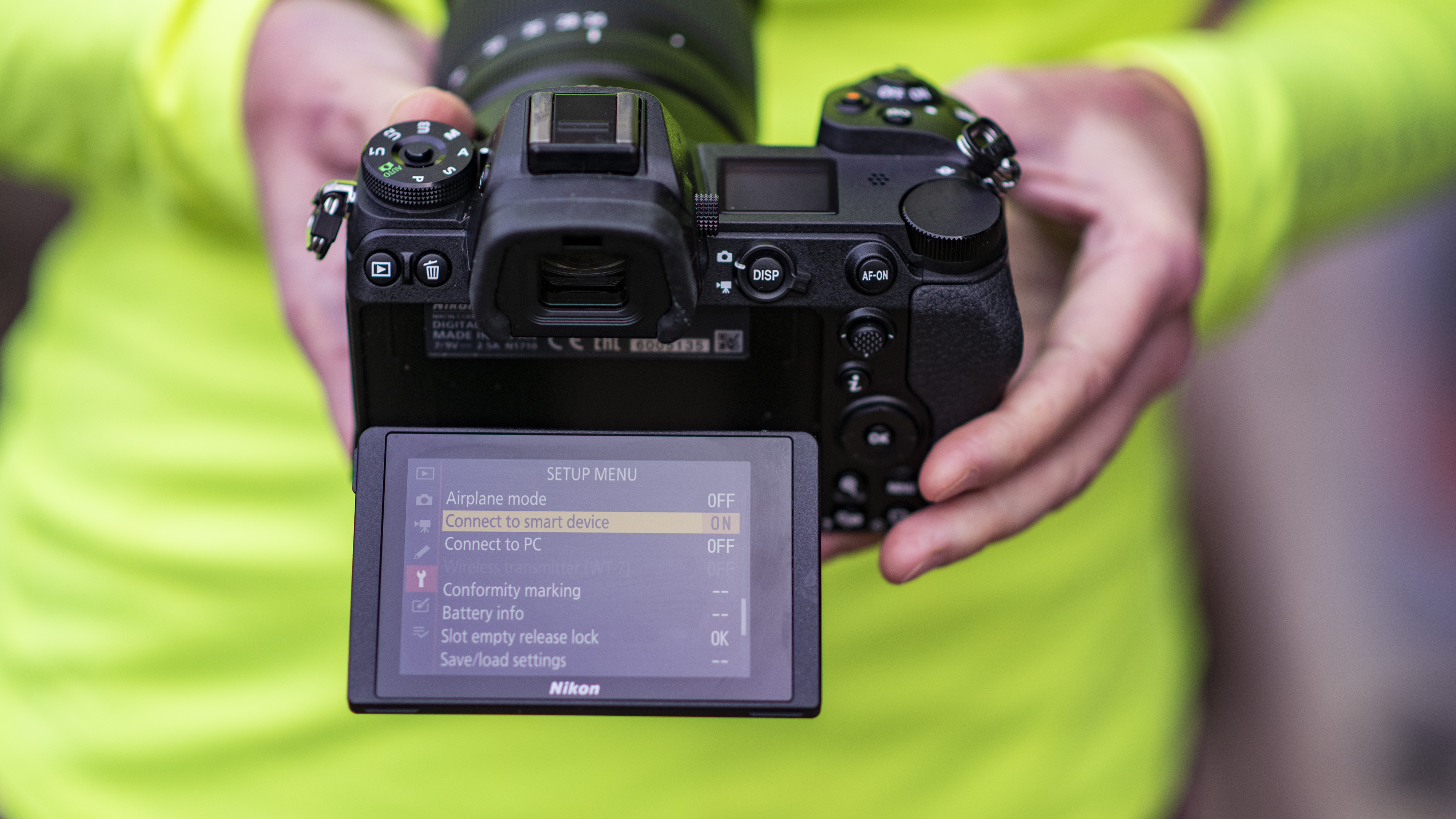
vii. Features
- DSLR: Even entry-level models have full manual controls, and DSLRs are powerful cameras
- Mirrorless: They match DSLRs feature for feature, frequently going a stride or 2 further
In the past, information technology was hard to split DSLRs and mirrorless cameras on their characteristic sets. But these days, with more money and fourth dimension being thrown at the development at mirrorless cameras, the latter are now the clear winners.
Both DSLRs and mirrorless cameras offer full transmission control over exposure and give you the opportunity to shoot both raw files and JPEGs. Paradigm quality between the 2 is pretty much identical, bated from the newer sensors plant in mirrorless bodies. In any one sector, such as entry-level cameras, enthusiast or pro models, the control layouts and capabilities are pretty like, too. Entry-level DSLRs tend to hibernate away the manual controls under a layer of automation, but it's the aforementioned for mirrorless cameras.
While the feature set of high-cease DSLR cameras is generally pretty impressive, it'southward fair to say that the boilerplate mirrorless camera now beats the average DSLR on specs. Near mirrorless cameras offering advanced IBIS (in-body image stabilization systems), advanced autofocus technologies such as tracking and eye-detection, 4K video as standard and more than besides.
Processing power is at its height in mirrorless cameras – once again, by virtue of them being newer. These high-end processors facilitate some of the more than impressive features, including high ISOs, fast shooting speeds and 4K video at faster frame rates.
The fastest autofocusing, every bit well as the almost comprehensive spread of points across the sensor, is now with mirrorless cameras, while super-fast frame rates of upwardly to 30fps are simply really possible thanks to the lack of a mirror.
Most mirrorless cameras offer articulating or tilting bear upon-sensitive screens, and although there are several DSLRs which offer the same, y'all'll now see the best screen engineering (and menu systems) on mirrorless cameras. Optical viewfinders were often the preference, only with dramatic advances in EVF applied science over the past few years, many people have now switched to electronic 'finders.
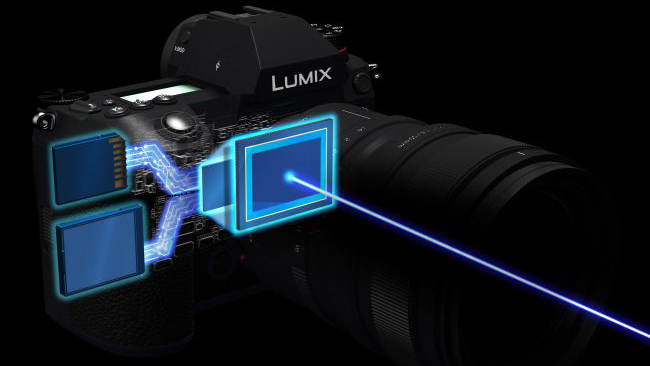
viii. Prototype quality
- DSLR: DSLRs use APS-C or full-frame sensors.
- Mirrorless: The cameras typically apply the same sensors, just there are also smaller formats for even smaller cameras. At that place are besides some medium format mirrorless options, too.
There'due south nothing to cull here, either. Currently, the highest resolution can be found in a mirrorless photographic camera, the medium format Fujifilm GFX100S, which has a 102MP sensor. Absolutely, that'south not a camera many people can afford, although the cheaper Sony A7R Iv mirrorless camera manages 61MP – even so a good 11MP more than the closest DSLR, the Canon EOS 5DS and 5DS R.
It's non just about megapixels, though, because the main factor in image quality is sensor size. With the exception of medium format sensors, full-frame sensors are the biggest and offer the best quality in low light, while cameras with APS-C sensors are competitive on epitome quality and much cheaper – you tin go either of these sensor sizes in both DSLRs and mirrorless cameras.
But the compact system camera market offers smaller formats besides. The Micro Four Thirds format used past Panasonic G serial and Olympus is smaller than APS-C, just so are the cameras and lenses, then you lot need to counterbalance up what's most important to you – size or ultimate image quality.
Overall, then, there'due south no intrinsic image quality reward in a DSLR, given that the same sensor sizes are available in mirrorless cameras, as well.
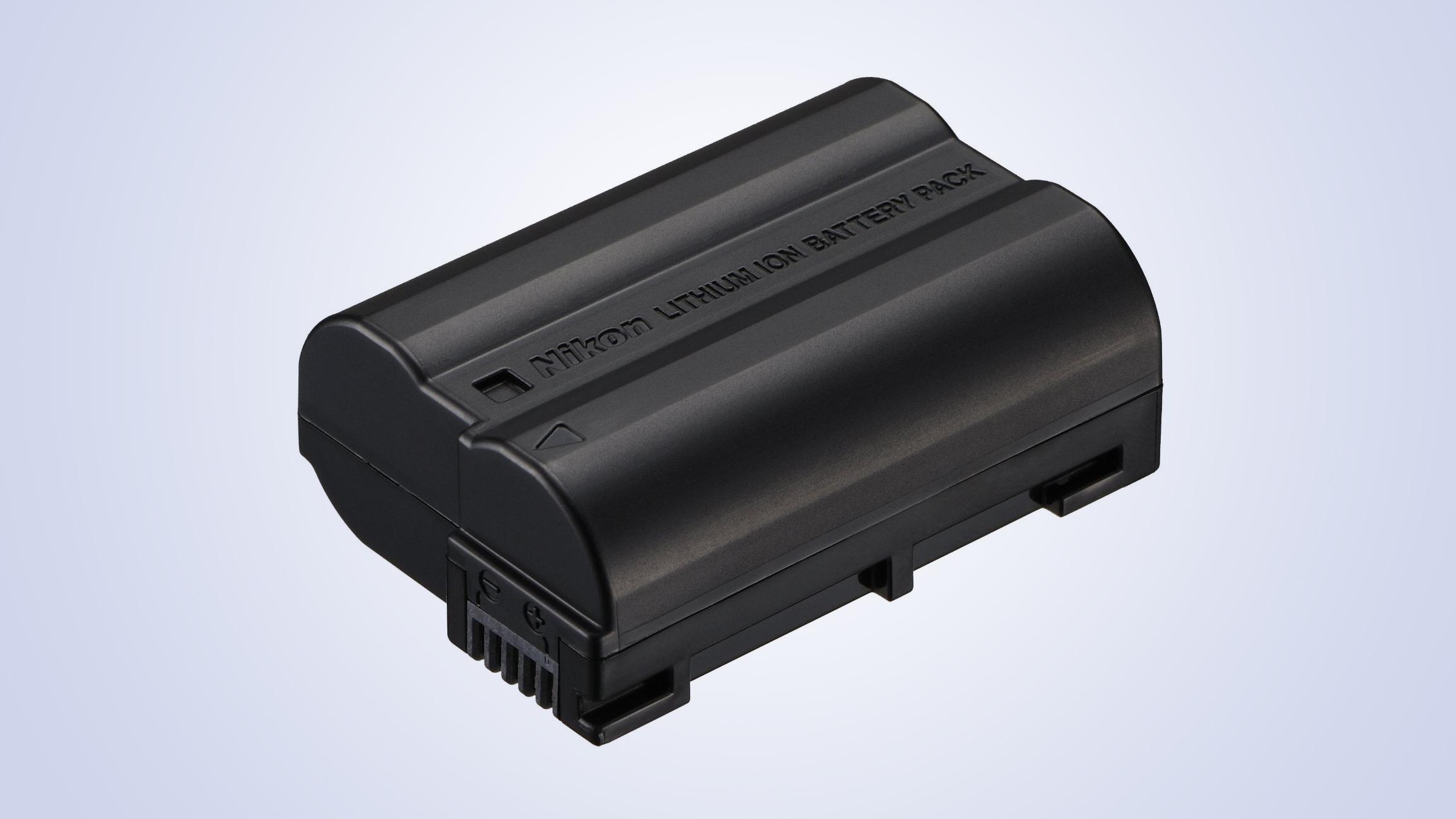
9. Battery life
- DSLR: 600-800 shots is average, meliorate models tin shoot over ane,000 shots on a accuse. Pro DSLRs may offering 2000+ shots per charge
- Mirrorless: Much weaker, typically around 300-400 shots per charge. Some manage around 600 or 700, although those with a college bombardment life volition often have either very large batteries or require ii
Bombardment life comparisons might non be exciting, just they are important when the differences are equally bully every bit this.
The very affordable Canon EOS Rebel SL3 / EOS 250D DSLR, for example, can accept 1,070 shots on a single charge, while the Fujifilm X-T4 mirrorless camera, a much more than advanced model, can only shoot 500 photos before the battery expires. This blueprint is repeated across the range of DSLRs and mirrorless cameras.
Why'southward this? DSLR batteries are sometimes larger, though not always, and you might accept thought that driving the mirror up and down for each shot would consume more power, and that that LCD display would be used merely as much. However, mirrorless cameras besides have to power an EVF in most cases also, and this is why they however have much shorter battery lives.
So, this is one surface area where DSLRs do ofttimes take a substantial applied advantage. If you're somebody that likes to shoot a lot in any given 24-hour interval, and then y'all'll near certainly need to invest in a 2d bombardment, or look for a mirrorless model that offers USB charging, and then you can use a ability bank while on the get. That isn't too difficult these days, though – most recent mirrorless cameras offering in-camera USB charging.
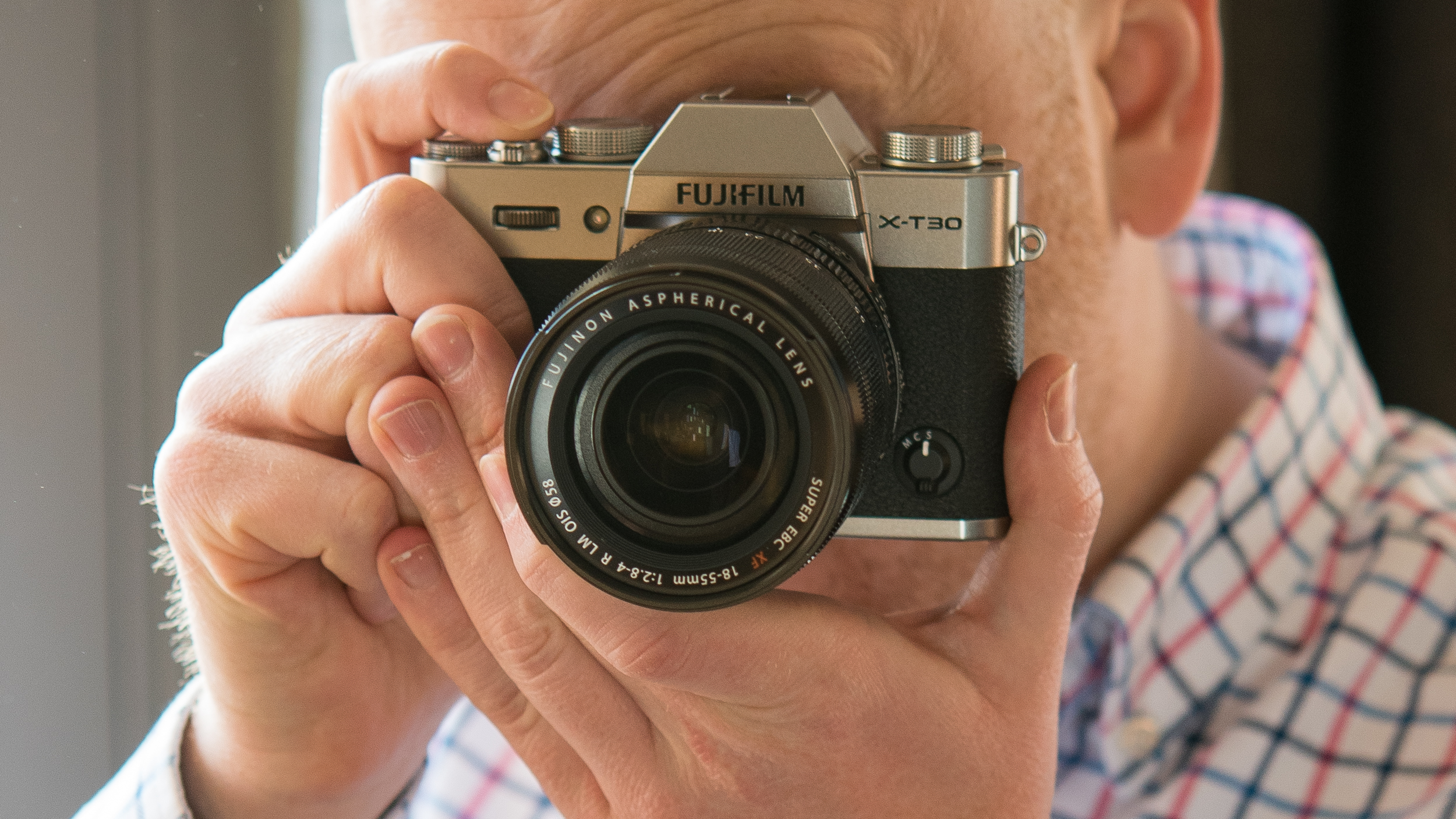
x. Price
- DSLR: The cheapest DSLRs may miss out on some characteristic like touchscreens and 4K video
- Mirrorless: Cheap mirrorless cameras often have these features merely don't have viewfinders; those that do price more than equivalent DSLRs.
Yous might hope that the simpler design of a compact system camera would brand them cheaper to buy, but that'southward not necessarily the instance. If you want a fully-featured, 'proper' camera with a viewfinder for the least coin, then a DSLR is however the cheapest option – but it'due south getting a lot closer between the two.
For example, the 24MP Nikon D3500 DSLR has a great APS-C sensor, an optical viewfinder (of course), decent manual controls and a staggering ane,550-shot battery life.
Its nearest rivals on price include models such every bit the Sony Alpha A6000, which packs in an almost identical 24MP APS-C sensor and features a congenital-in electronic viewfinder. That said, information technology's only that cheap considering it's been superseded.
Once you get into enthusiast and pro market, notwithstanding, the differences largely disappear – for any given corporeality of money you get broadly the aforementioned features, performance and power.
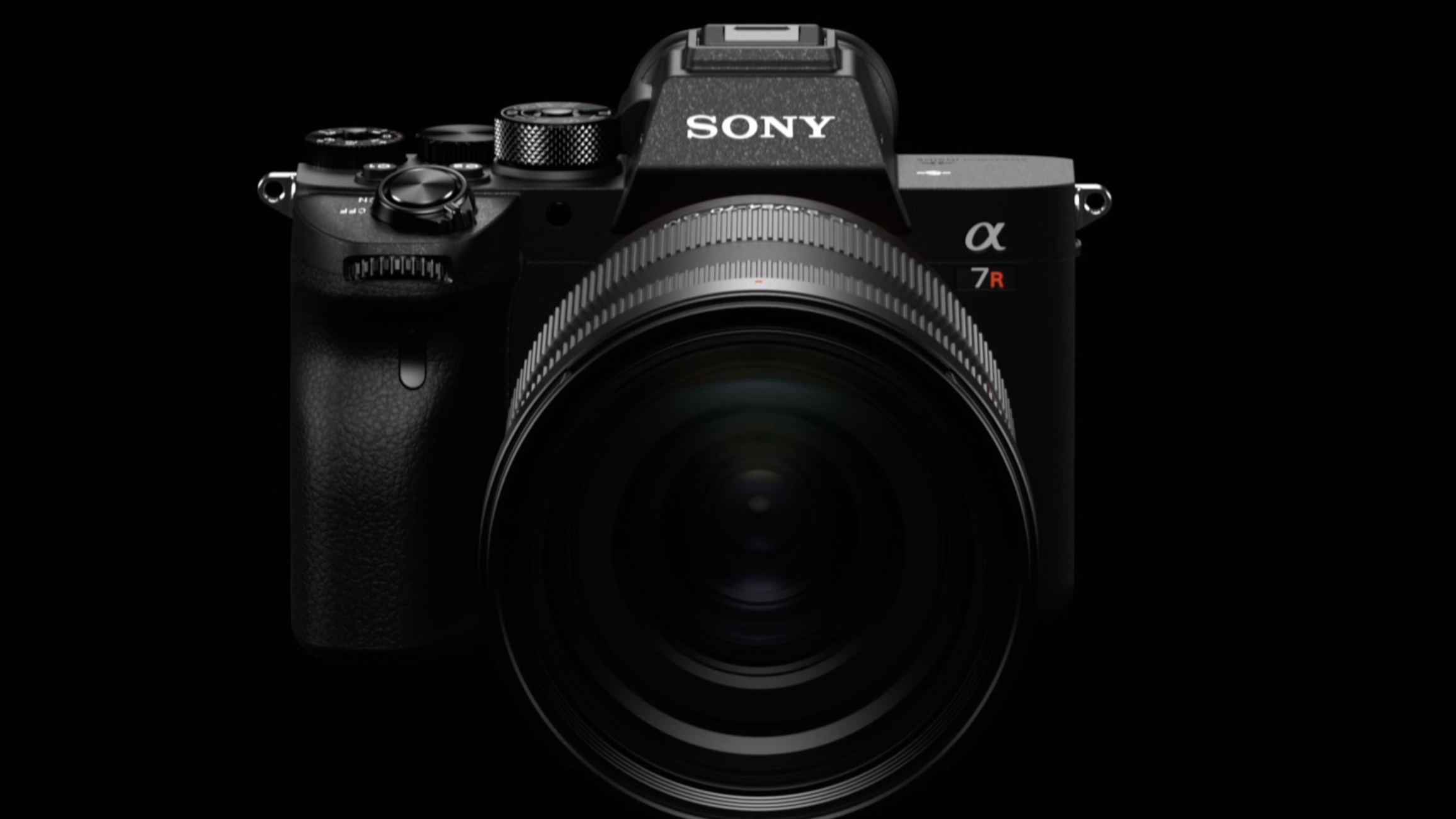
Mirrorless vs DSLR: the verdict
- DSLR: Sturdy, good value cameras that offering impressive handling and peak image quality
- Mirrorless: Technically more than advanced, often smaller and lighter, and definitely the way forrard.
In times gone by it was harder to give a definitive respond in the mirrorless vs DSLR fence. Only these days it's getting more than difficult to contend the case for the DSLR. With more and more mirrorless models coming onto the market – and fewer and fewer DSLRs – it's get increasingly clear which way the time to come lies.
Mirrorless cameras give you the advantage in many dissimilar scenarios. They are generally lighter and smaller their DSLR equivalents – frequently with smaller and lighter lenses to friction match, also. They bring a comprehensive, modern feature set, such equally superlative AF tracking operation, 4K video recording and IBIS, where DSLRs are now starting to fall backside.
That said, there's notwithstanding something to be said for DSLRs – and there's still some life in the old dog yet. On the whole, because they're older and lack EVFs, they tend to exist a cheaper proposition than mirrorless cameras, and y'all can selection up some great bargains.
The trade-off is that yous might not get the latest tech, only not every photographer needs it. DSLRs also requite yous a more comprehensive lens range, as well. Battery life for mirrorless cameras is withal some way behind DSLRs and, while it is improving, nothing even so quite matches what a DSLR is capable of in that respect.
The ergonomics of both high-stop DSLRs and loftier-end mirrorless cameras are fantastic, but information technology's arguable that cheaper mirrorless cameras aren't quite as pleasurable to utilise as cheaper DSLRs. This is, though, often down to personal choice and shooting preferences. At that place's now less to choose between optical and electronic viewfinders, with the latest iterations now beingness and then adept that many oft prefer them.
If you lot're already invested in the DSLR organisation – or perhaps y'all actually practice take a strong craving for their shooting manner – there's nevertheless a picayune chip of life left in them. We won't write them off completely just even so, simply it seems relatively unlikely nosotros'll exist seeing many new releases from here. Nikon has already said as much, and other manufacturers similar Canon are likely to follow suit.
All in all, information technology'southward safe to say that if yous're coming to a 'real' photographic camera for the first time, it makes more sense to cull mirrorless now. Information technology'southward clear that every manufacturer will be pursuing advances in this area much harder than DSLRs, which volition be consigned to the history books over the next decade.
Right now, there'due south never been more choice – but for most photographers, mirrorless makes the most sense.
Source: https://www.techradar.com/news/mirrorless-vs-dslr-cameras
Posted by: mcdougalthilbod.blogspot.com


0 Response to "Can You Use Dslr Lens On Mirrorless Camera"
Post a Comment